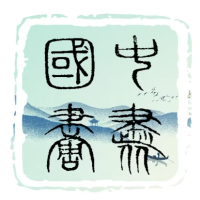陈平,庚子年生于京师,幼习国学,渐悟文人画理趣。其山水之作,笔墨简古,意境清幽,如若尘世之外桃源,寄意山水,构筑心中理想之境。其于艺途,尤重写生,观天地万物,参自然造化,融入胸中,化为笔底之妙。

写生之法,始于宋人,后传入中土,渐为艺者所重。先贤如荆浩、黄公望,皆以写生为本,览四时之变,笔记万象。然古之写生,非今人所解,乃以自然为师,提炼其象,转化为符,得其神韵而非形迹。李可染等人,癸卯年倡写生之法,传授于美院,历半世纪,渐成今世山水画之基。写生之要,在于亲自然,观万物,得其灵气,以笔墨写之,非直观仿物,乃心摹手追,返本归真,使画作贴近现实,而非空中楼阁。
陈平深谙写生之妙,游历山川,寄情江海,静观动察,探寻自然规律,融汇于心,化为画卷。写生之道,非徒技艺,乃艺者与天地契合,心神交融。其山水之作,正是自然与人心共鸣之产物,呈现深沉、内敛而隽永之艺术精神。
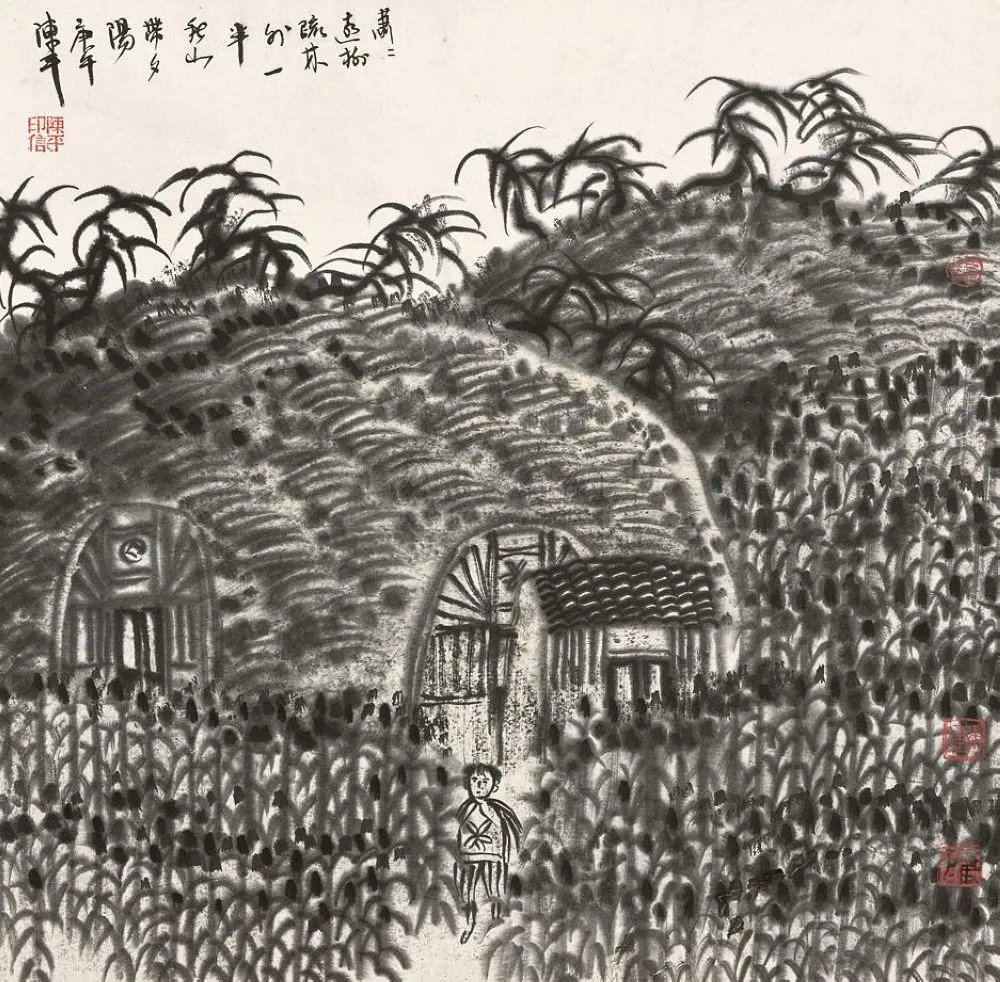
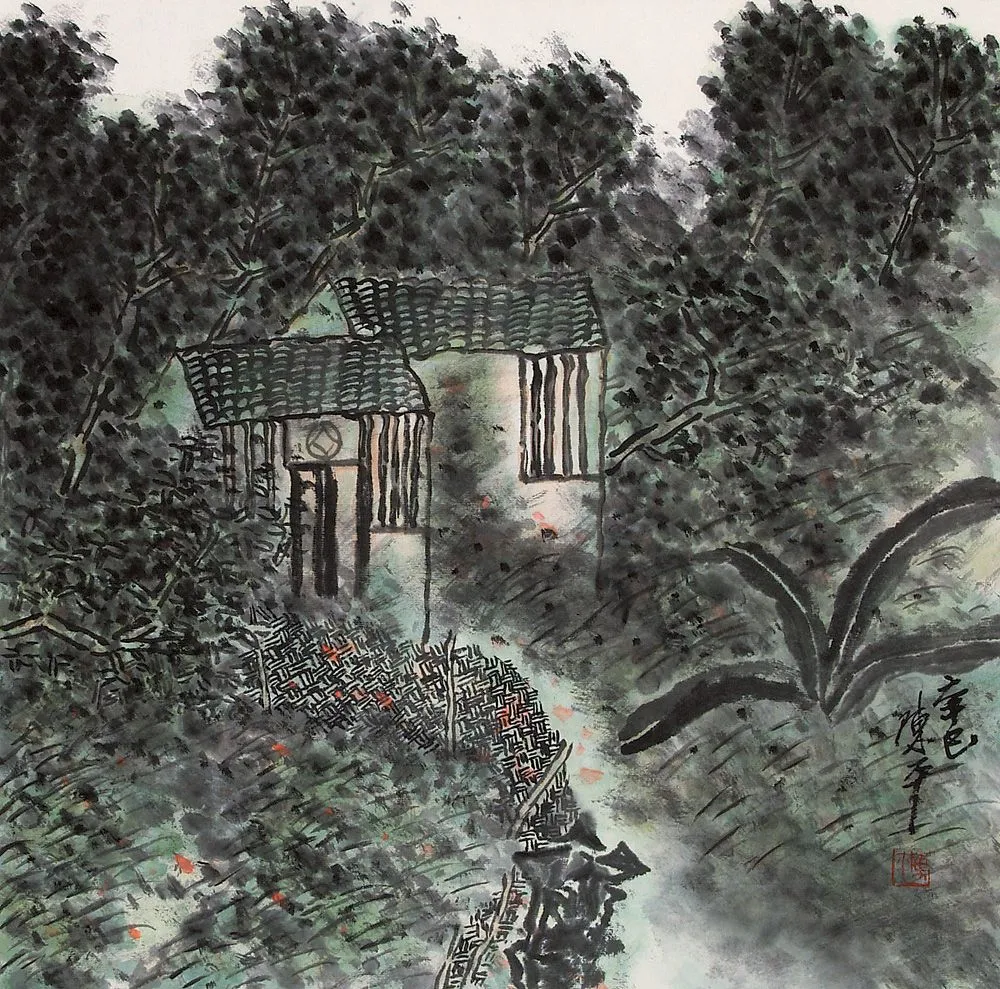
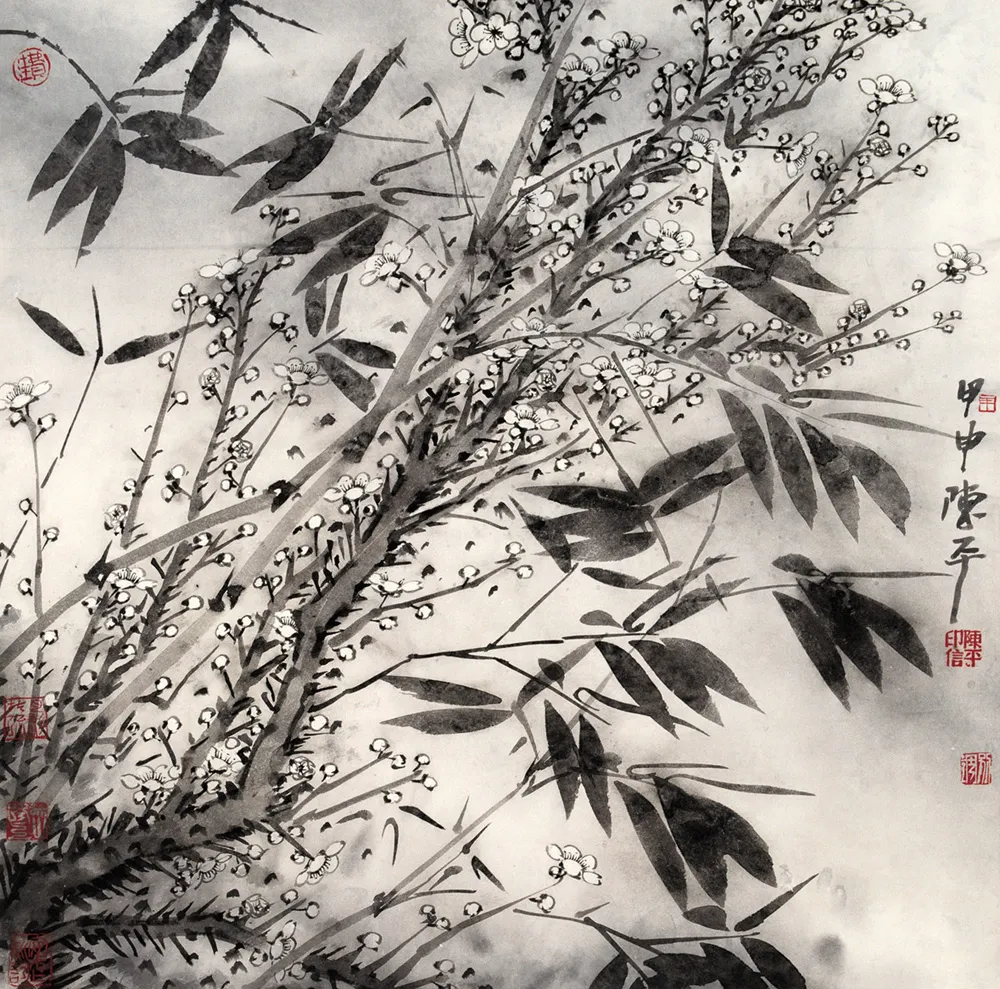

陈平钟情华山,巍峨险峻,每令其心驰神往。庚子秋,首携弟子登华山写生,感其壮丽,常言黄山奇,张家界怪,唯华山雄、险、奇,三字尽显,未观华山,山水画徒留憾恨。华山如天然画谱,古人皴法皆可寻源。写生于此,弟子因山设画,南北雄强湿润,各展其妙。黄山烟云多,画面空白亦多;华山烟云少,需凭想象增添。手法自得,不拘成法。秋季尤佳,枯木萧瑟,松姿奇峭,画意自现。推崇王履华山作,既写实,又写意,峰峦布局精妙,笔墨精炼,结构厚重,意境深远。
陈平深信写生贵在感悟。山水云烟石峰,形态意境,皆须笔墨表现。云烟疏密有度,石峰三面分明,变化为宜。东峰巨石险绝,必现其险势。画面自合自然,稍加夸张,更具趣味。写生之际,心神与景物共鸣,笔墨随心,画面四角布置有序,山水画宜居宜游,气韵流转。教弟子,陈平因材施教,启其自悟。风格源自心,文心定画风。人人当守中国文脉,与古对话,写生中自见本真。信息时代,见闻广博,早觅自我风格,正其机缘。唯理解生活,自然之理,方可笔下真实,独具风骨。
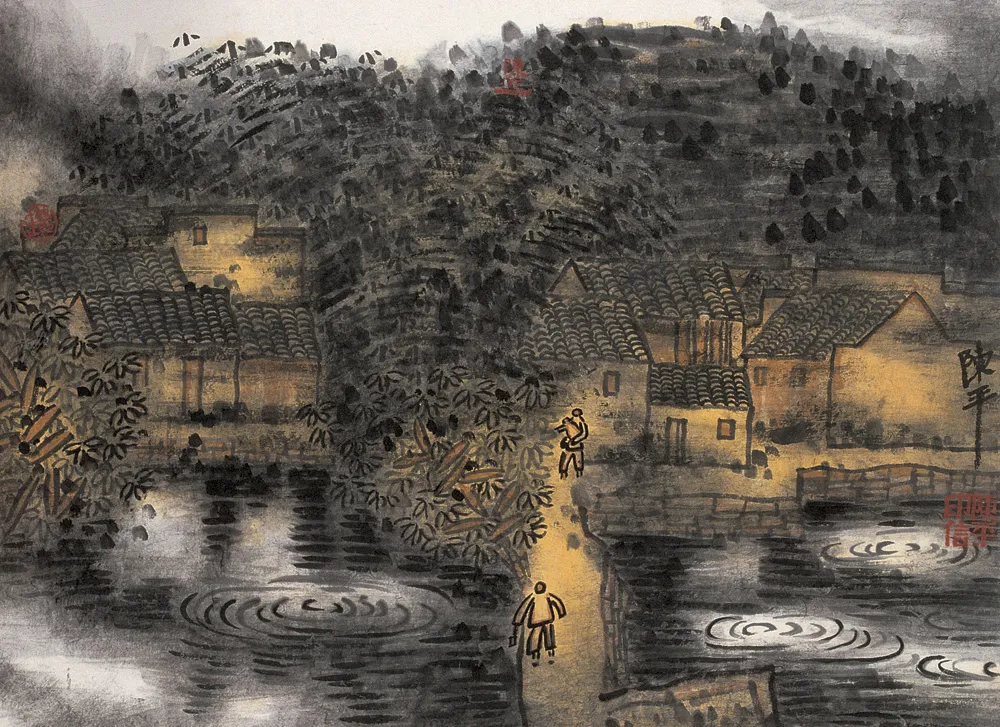
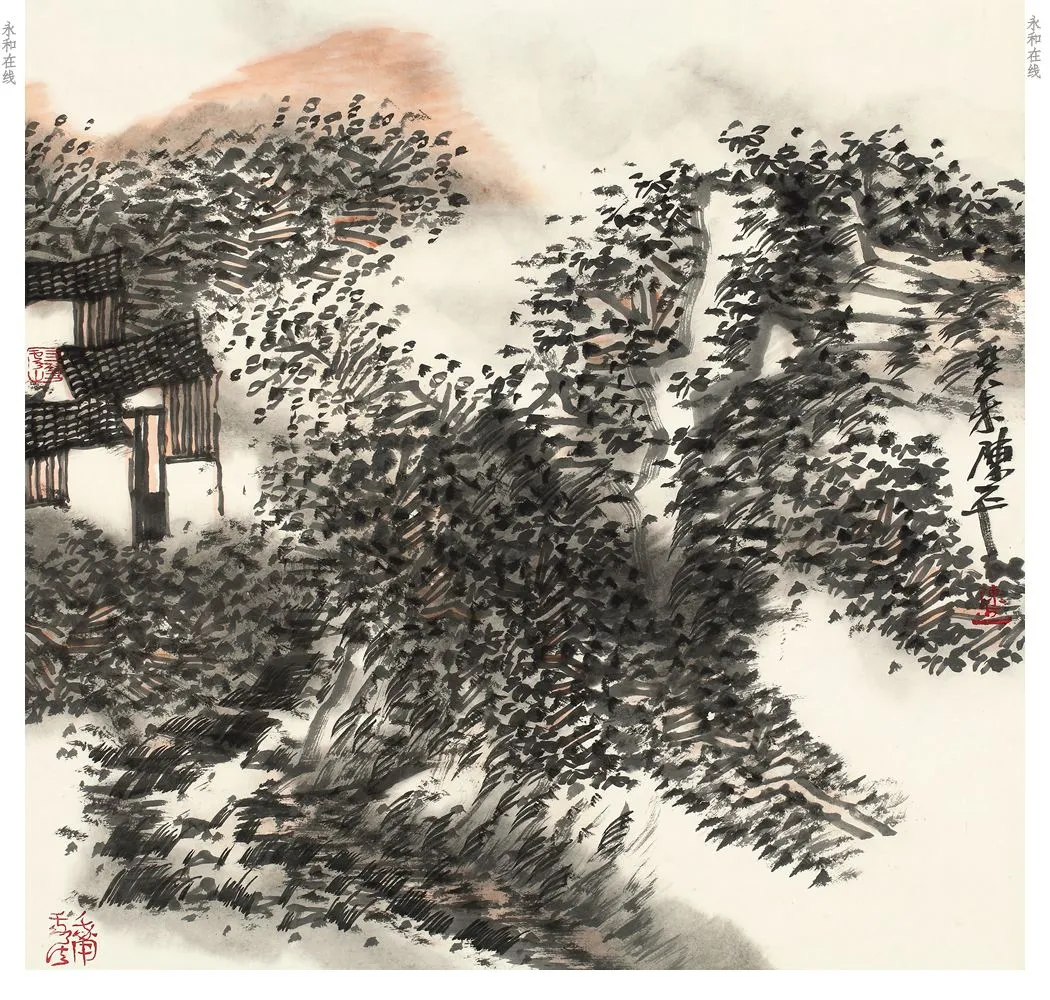

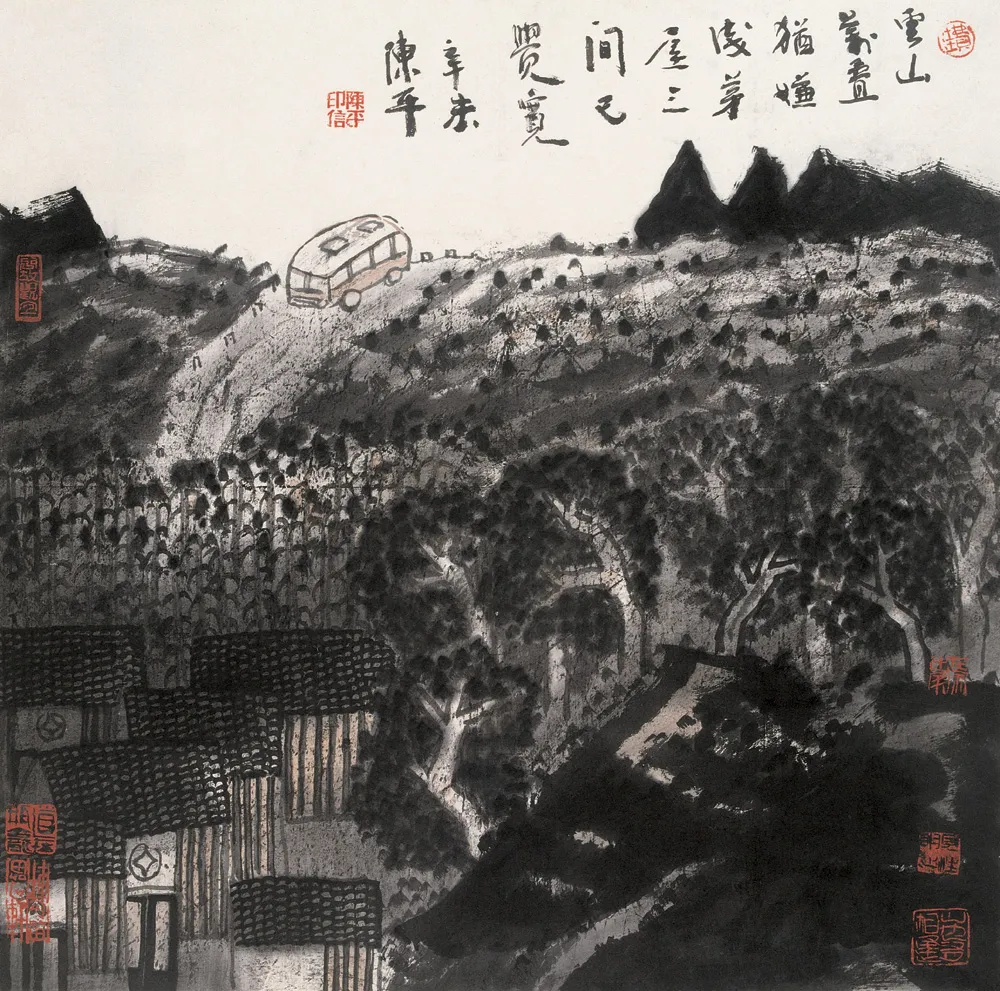
陈平两度率弟子写生太行,山川雄伟,取材自然。太行结构圆浑,纹理丰厚,陈平训导弟子,以心观,手触,探方圆之奥,悟纹理与皴法之妙,握中锋侧锋与山石变化之理。观大以见微,探小而察宏,发现山石结构,化为笔墨言语,融入丹青之中。
陈平深信李可染言,前贤所未尽,尚多未见,唯深入自然,方能细察辨析,古今取舍得宜。自然万象,变化无穷,写生重在观感,感受深记,方能运笔自如。陈平常言,写生即神游其中,取景于心,胸中丘壑因目识心记而成,画理物理心理三者合一。太行村居错落,崖壁苍茫,四季之景尽在笔端。写生须视角多变,游离客体之外,精神不失,夸张写实相辅,笔墨间自显真实与艺术之妙合。
陈平携弟子末次写生,择地武当山,道教圣地,南岩宫、紫霄宫、武当金顶,皆氤氲玄秘之气。陈平训导,此行不止观景,尤重写生与笔墨之转换,因弟子归后将面临毕业创作,写生所获,关乎艺途成败。写生贵在细察,不可浮光掠影,须沉心探微,抓住景物生动之处,若疏忽现场,事后易失真意。陈平常诫,概念化为大敌,不可以临摹硬套写生,唯有深入自然,方能自得真言。白雪石取山石之理,李可染重光影之效,黄宾虹夜山浑厚,傅抱石烟雨磅礴,各有悟处,故能创独特画法。

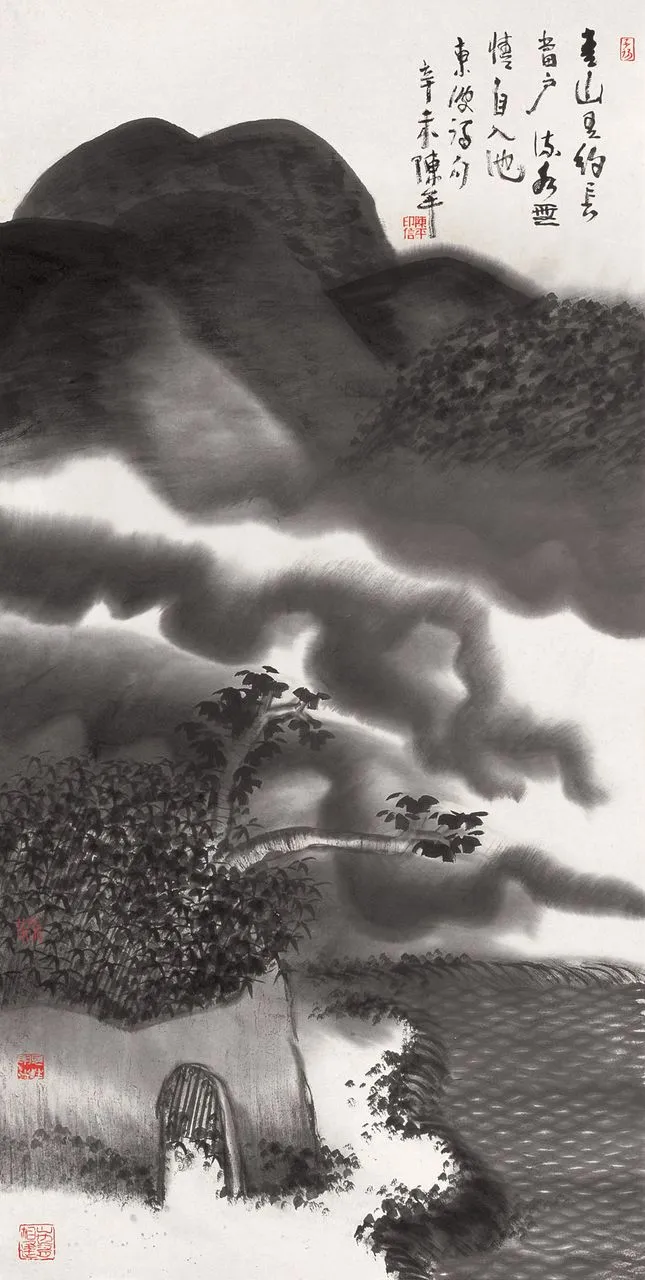
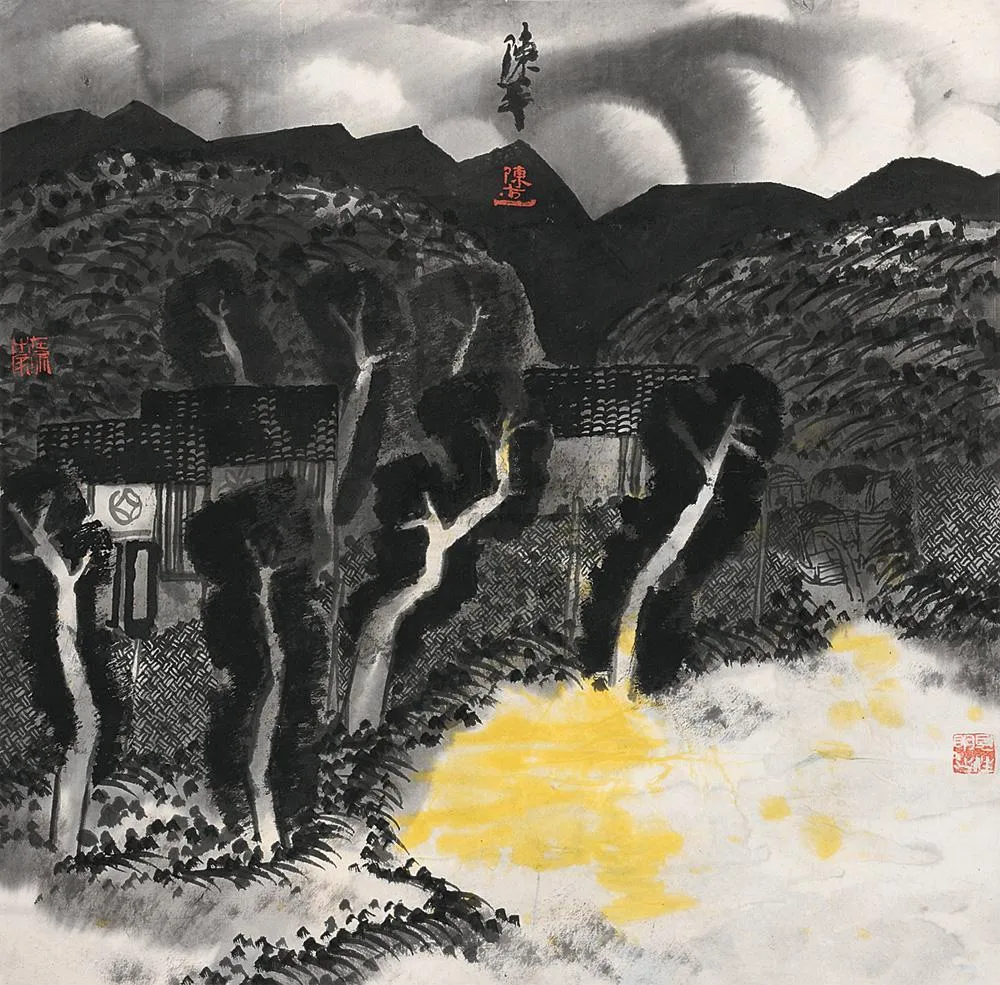
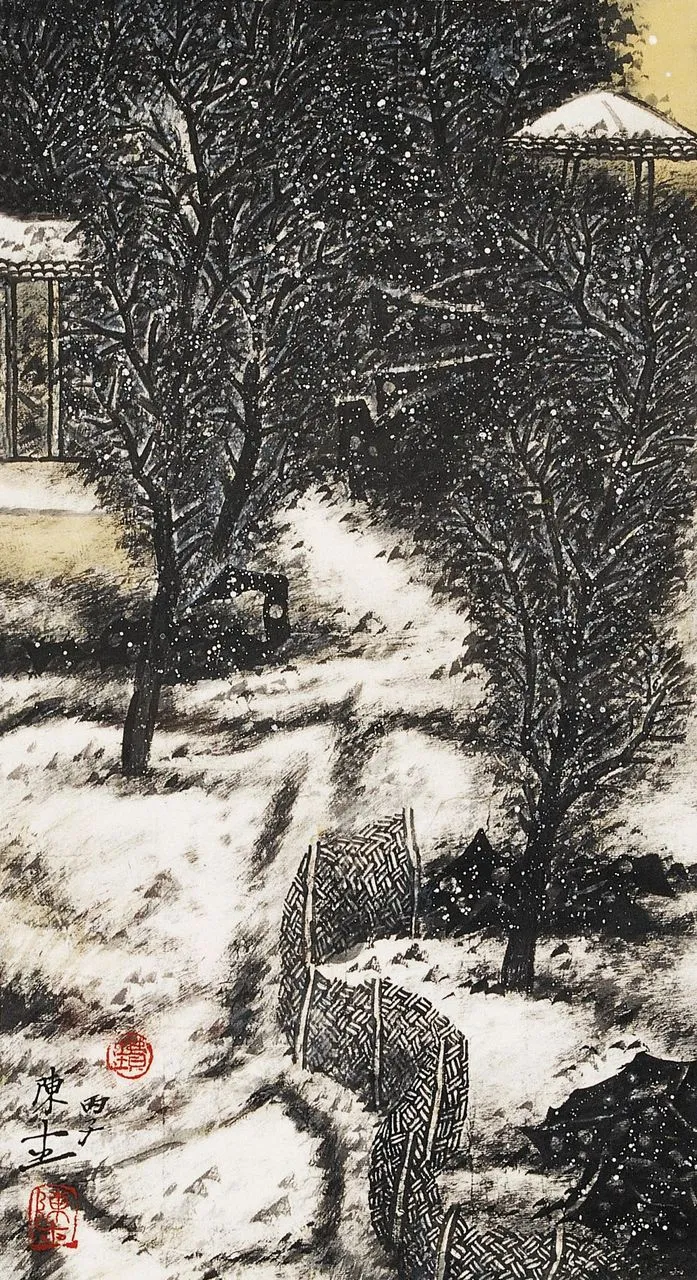
陈平以为,中国画非写实,写生亦然。自然精微,难以尽描,须抓其理,以视觉之法转为笔墨,线条造型,疏密虚实,皆经意取舍。写生关乎取舍,宜择易入画者为重。陈平常举李可染为鉴,李每写生,仅成半篇,归室再作调整,画既生动,又具深远。对景写生,乃创作基础,写生后再创,方能真情流露。同景异感,画面自异。艺术植根于生活,若凭观念创作,易流于表面,失其真髓。
陈平写生,师法造化,于自然中悟笔墨,画境意出天然,使人澄怀涤虑,常有身临其境之妙感。
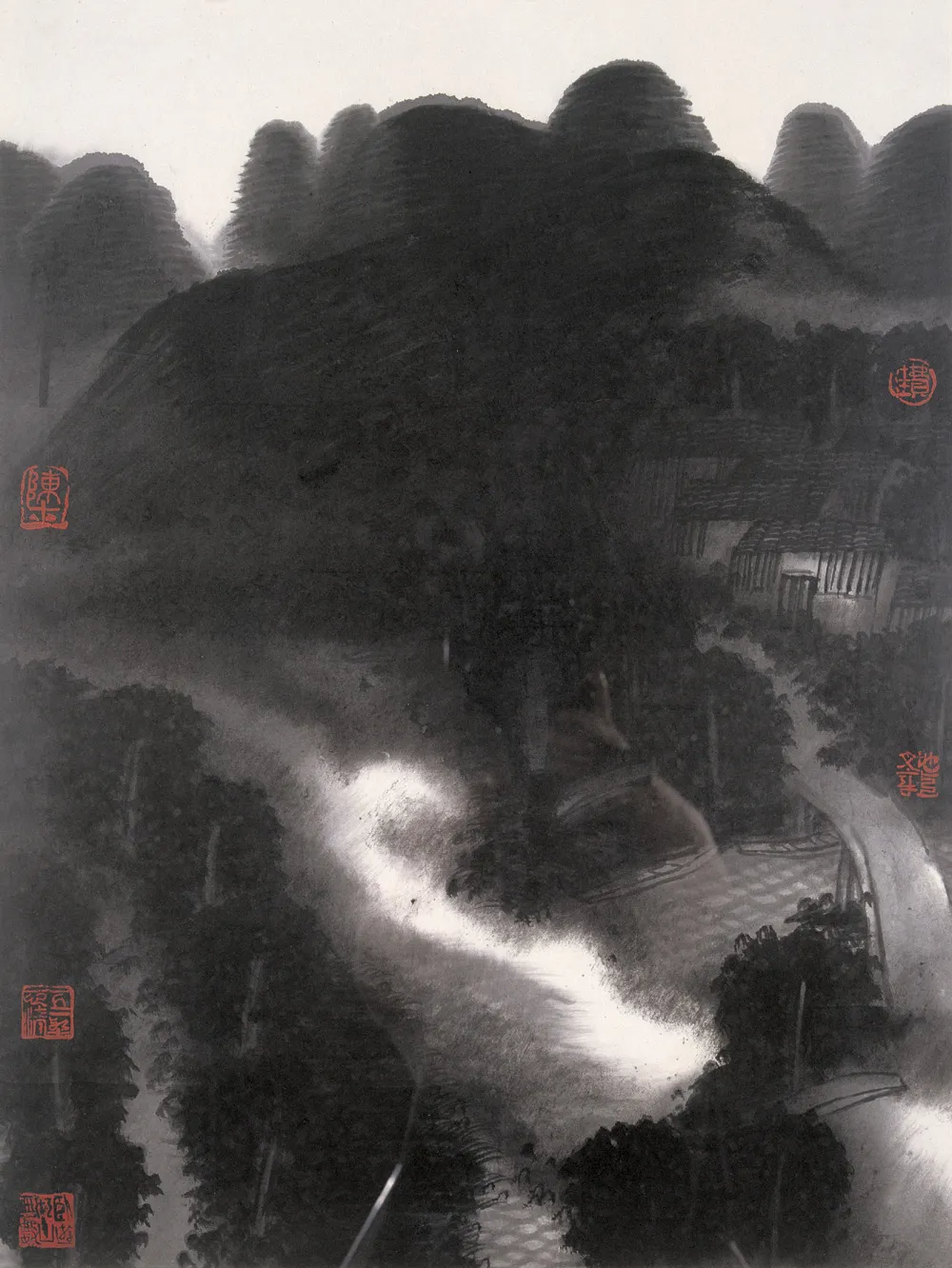
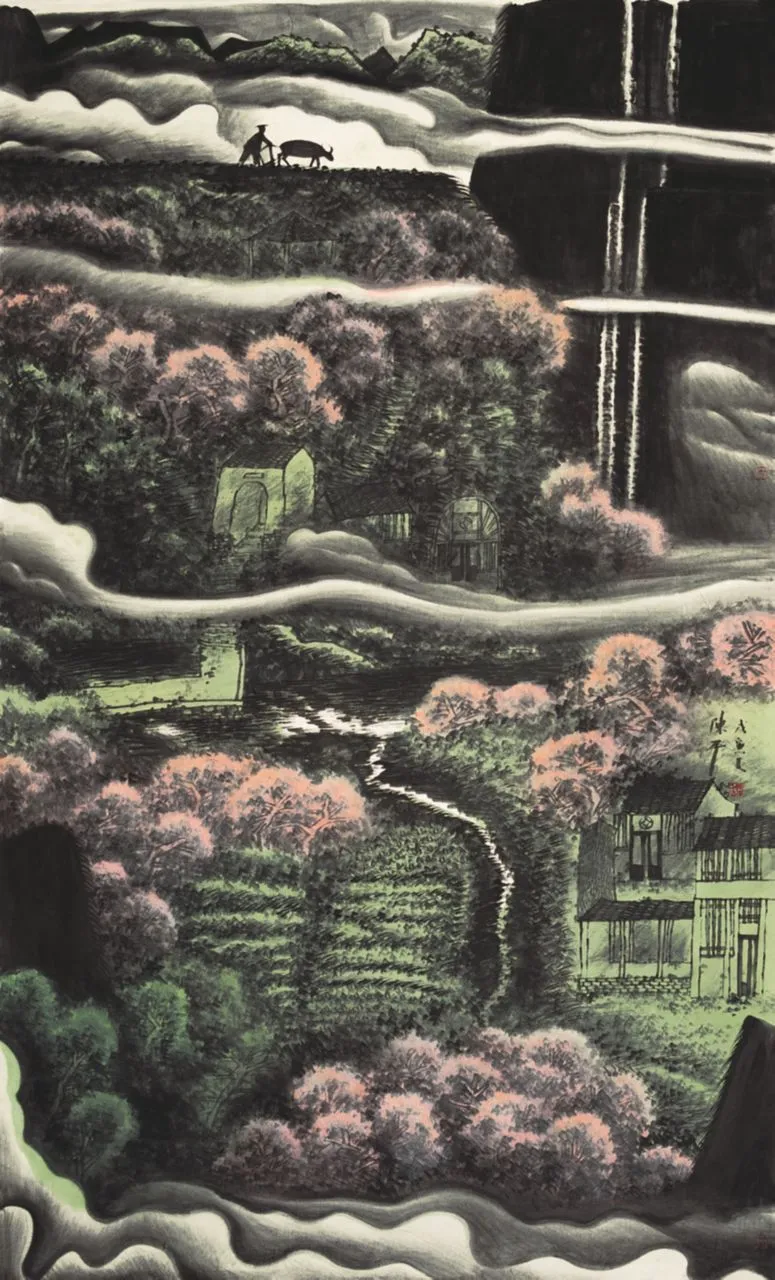

Chen Ping: Learning from Nature, Understanding the Essence, Enlightening the Spirit, and Achieving Mastery in Brushwork
Chen Ping, born in the Gengzi year in the capital city, studiedical Chinese literature from a young age and gradually grasped the essence of literati painting. His landscape works, characterized by simple yet profound brushstrokes and tranquil atmospheres, create an idealized world akin to a utopian retreat beyond the mundane. In his artistic journey, he particularly values sketching from life, observing the myriad forms of the natural world, internalizing them, and transforming them into the wonders that flow from his brush.
The practice of sketching from life began with the Song dynasty and was later passed down to the Chinese literati, gradually becoming highly valued among artists. Masters such as Jing Hao and Huang Gongwang considered sketching from life essential, capturing the changes of the four seasons and recording the myriad phenomena of nature. However, the ancient understanding of sketching differs from today’s interpretation; it involved learning from nature, refining its forms, and transforming them into artistic symbols, capturing their spirit rather than their literal appearance. Li Keran and others advocated for this method during the Gui Mao year, introducing it to the Central Academy of Fine Arts, where it evolved over half a century to become the foundation of contemporary landscape painting. The essence of sketching lies in immersing oneself in nature, observing its vitality, and capturing it through brushwork—not merely replicating reality, but internalizing and authentically expressing it, thus grounding art in reality rather than detaching it from the world.
Chen Ping profoundly understands the wonders of sketching from life, often traveling through mountains and rivers, pouring his emotions into the landscapes he encounters. He quietly observes and explores the laws of nature, internalizing them, and transforming these insights into his paintings. The practice of sketching is not merely a technique; it is the artist's communion with the natural world, a harmony between the heart and the universe. His landscape paintings are the result of this dialogue between nature and the human spirit, embodying a profound, restrained, and enduring artistic essence.
Chen Ping is deeply enamored with Mount Hua, whose towering and rugged peaks captivate his imagination. In the autumn of the Gengzi year, he first led his students to sketch from life on Mount Hua, marveling at its grandeur. He often remarked that while Huangshan is known for its beauty and Zhangjiajie for its peculiarity, only Mount Hua encapsulates the essence of "majestic, perilous, and extraordinary." Not seeing Mount Hua would leave a landscape painter with a deep regret. Mount Hua is like a natural compendium of artistic techniques, where the brushwork of the ancients can be traced. While sketching here, students adapt their paintings to the mountain, each capturing the distinct strength of the northern peaks and the moisture of the southern ranges. Huangshan’s abundant mists require ample blank space in paintings, whereas Mount Hua, with fewer mists, calls for imaginative additions. The key is to develop one's technique without adhering rigidly to established methods. The autumn season, with its withered trees and rugged pine silhouettes, offers especially rich inspiration. Chen Ping admires Wang Lü’s works on Mount Hua, which combine realism with expressive brushwork, showcasing a sophisticated composition, refined brushstrokes, and a profound sense of structure and atmosphere.
Chen Ping firmly believes that the essence of sketching lies in deep perception. The forms and atmospheres of mountains, mists, and rocky peaks must all be expressed through brushstrokes. The density of mists and the solidity of rock faces require careful balance, with variations that suit each scene. The perilous East Peak, a colossal stone cliff, must convey its inherent danger. A painting should align with nature, but with slight exaggerations to enhance its appeal. During sketching, the artist's spirit should resonate with the landscape, allowing the brush to follow the heart, arranging the composition harmoniously. A landscape painting should invite the viewer to dwell and wander within it, with a flowing energy throughout. When teaching, Chen Ping tailors his guidance to each student, encouraging them to discover their inner selves. Style originates from the heart, and the heart's culture determines the painting style. Everyone must preserve the Chinese cultural essence and engage with tradition, finding their true self through sketching. In this age of abundant information and experiences, finding one’s own artistic style early is a great opportunity. Only by understanding life and the principles of nature can one’s brushwork be authentic and unique, endowed with true character.
Chen Ping led his students on two sketching trips to the Taihang Mountains, whose majestic landscapes naturally lend themselves as subjects. The Taihang Mountains, with their rounded forms and rich textures, provided Chen Ping an opportunity to instruct his students on the nuances of observation and tactile exploration. He emphasized the importance of understanding the balance between straight and curved lines, the relationship between texture and brushwork, and the changes in mountain forms as they relate to different brush techniques. By observing the grand to understand the small, and by examining the small to comprehend the grand, students could uncover the structural principles of the rocks and translate them into the language of brush and ink, infusing their paintings with the spirit of the landscape.
Chen Ping deeply values Li Keran’s teaching that much remains undiscovered, even after the great masters. Only by delving deeply into nature can one carefully observe and analyze, making the right choices in the context of both ancient and modern art. Nature’s myriad forms are endlessly changing, and sketching relies on perception and deep memory to guide the brush with ease. Chen Ping often says that sketching is akin to spiritually wandering within the landscape, taking in the scenes with one’s heart, where the images of mountains and rivers are imprinted in the mind, allowing the artist to harmonize artistic principles, natural laws, and personal insights. The Taihang Mountains, with their scattered villages and vast cliffs, offer seasonal vistas that find their way into every brushstroke. During sketching, the artist must adopt multiple perspectives, remaining detached from the object yet retaining the spirit, where exaggeration and realism work hand in hand, and the brushwork naturally reveals the truth and beauty of the scene.
Chen Ping led his students on their final sketching trip to Mount Wudang, a sacred site of Daoism, where locations such as Nanyan Palace, Zixiao Palace, and Wudang Golden Summit are suffused with mystical Daoist energy. Chen Ping emphasized that this journey was not merely for viewing the scenery but was crucial for understanding the transition from sketching to brushwork, as the students were soon to face their graduation projects. The success of their artistic careers would hinge on what they absorbed from this experience. Chen Ping stressed the importance of detailed observation during sketching, cautioning against superficiality. One must focus intently, capturing the vivid elements of the scenery; neglecting this on-site would lead to a loss of authenticity later. Chen Ping often warned that conceptualization is the enemy of true sketching—one should not apply the methods learned from copying directly to life sketching. Only by immersing oneself in nature can one discover true insights. Bai Xueshi’s understanding of rock structure, Li Keran’s emphasis on light and shadow, Huang Binhong’s thick and rich night landscapes, and Fu Baoshi’s majestic rain scenes all stemmed from their unique insights, enabling them to develop distinct painting styles.
Chen Ping believes that Chinese painting is not about realism, and the same applies to sketching. The intricate details of nature are difficult to fully capture, so one must grasp its essence and translate it into brushwork through visual art principles. The composition, balance of space, and interplay of lines must all be carefully selected. Sketching involves making choices, and it is crucial to select what is most conducive to painting. Chen Ping often cites Li Keran as an example: Li would complete only half of a sketch on-site, finishing the rest in his studio, where he would refine and deepen the work. Thus, his paintings combine the liveliness of the scene with a profound depth. On-site sketching lays the foundation for later creation, where the artist’s true emotions can emerge. Even the same scene, perceived differently, results in varied artistic expressions. Art must be rooted in life; if one relies solely on preconceived notions, the work risks becoming superficial and losing its true essence.
In his sketching, Chen Ping learns from nature, comprehending brushwork within its natural context. His paintings, derived from the essence of the natural world, purify the mind and spirit, often giving viewers the profound sense of being transported into the scene.
责任编辑:苗君
